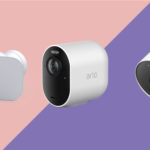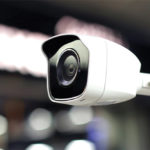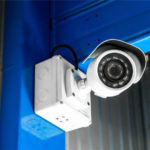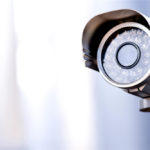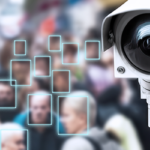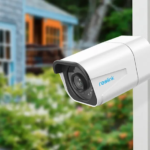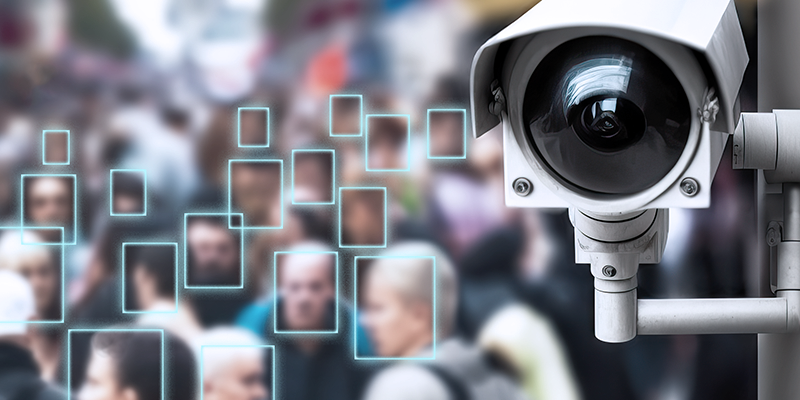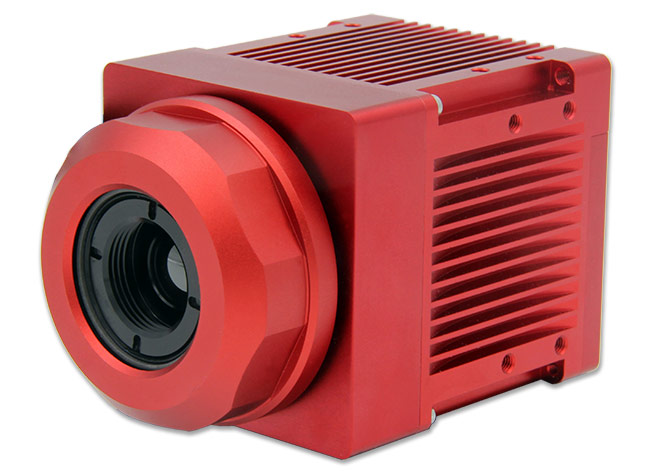Home security cameras are equipment that can help you monitor and protect houses. They can capture the shots of houses and property accessed from smartphones, tablets or computers. Most home -safe cameras have carried out exercise and will begin records when detecting.
Why Do You Need a Home Security Camera for Your Home?
One of the best, and most obvious, reasons to invest in a home security camera is the simple fact that they can help provide peace of mind. If something ever happened, having a home security camera might help you catch important details like a license plate number, for example, which may make it easier for law enforcement to apprehend the suspect.
However, whether or not you need a home security camera for your home depends on the level of security you want.
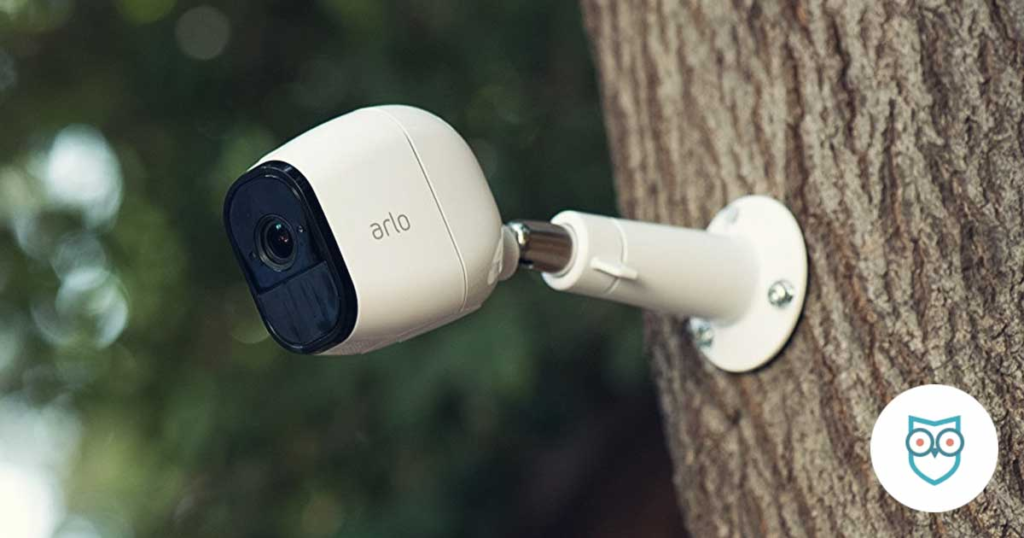
How Many Security Cameras Will You Need?
The number of security cameras you need depends on the size of your home. At a minimum, it’s recommended that you place a camera at the main entrance of your home. Additionally, having outdoor cameras on all ground floor entrances is custom.
For added security, you can choose to install security cameras in the main hallways or second floors. However, because of privacy and data protection issues, you might skip the bedroom and bathroom.
Types of Security Cameras
Before you start looking for a camera for your home, it’s a good idea to familiarize yourself with some of the most common varieties.
Video Doorbell Cameras
A popular type of outdoor camera, it replaces your traditional doorbell with one that has a camera inside. Whenever the camera detects motion or when the doorbell is pressed, it starts recording. Some video doorbell cameras feature two-way audio to your smartphone or smart speaker. Video doorbells can also record interactions if you don’t answer the ring to review the footage later. They are usually pretty easy to install, especially for seasoned DIYers. Some require batteries, but in most cases, you can hardwire it right in.
Outdoor Cameras
Outdoor cameras are available in wired and wireless options. They are typically mounted on the house or some other nearby structure. Wired outdoor cameras are hardwired into your home’s electrical system. Wireless ones are not—you typically plug them into a wall or are powered with batteries.
Indoor Cameras
Also available in wired or wireless, indoor cameras are designed for those most concerned with what is going on inside the house when they are not home. Indoor cameras are usually plug-in devices and require WiFi or an internet connection to provide you with remote alerts and live video feeds.
Wireless Cameras
Available for indoor and outdoor use, wireless cameras connect to a WiFi network and store footage in the cloud. These are usually easier to install as they don’t need a cable connection. There are also specialty indoor cameras that dispense treats to your pet or baby cameras that record temperature and air quality.
Floodlight Cameras
These are outdoor cameras with floodlights that turn on when the camera does. This helps them capture clearer video, especially at nighttime. They can also be hardwired to existing lighting wires or be powered by an outlet if they’re wireless.
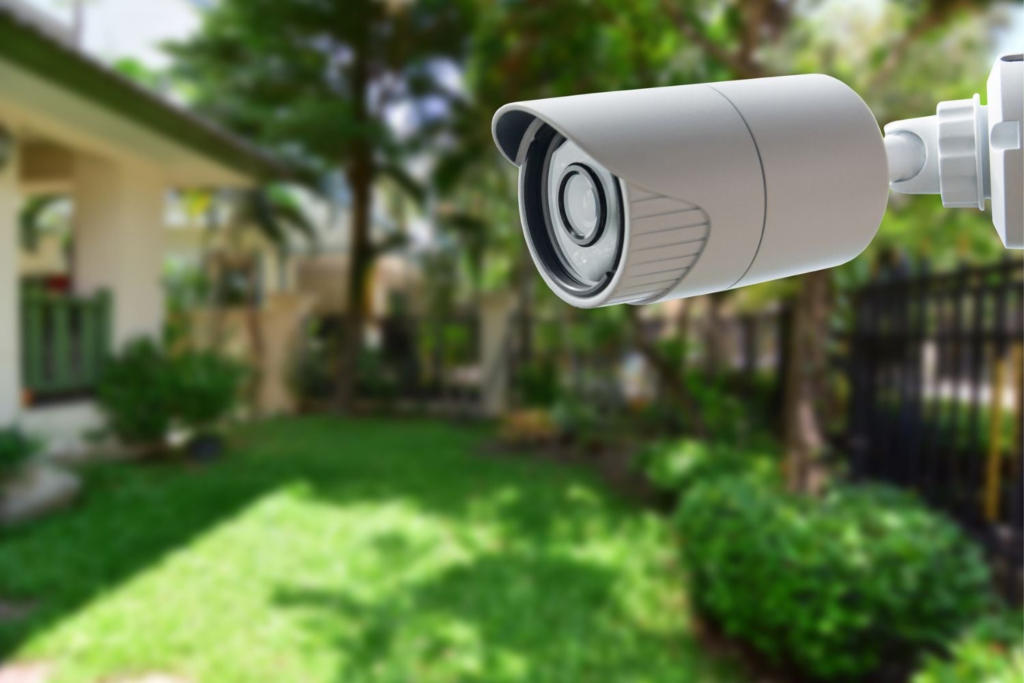
Factors to Consider When Buying a Home Security Camera
If you’re looking to buy a home surveillance camera, there are a few things you need to consider:
- Installation: Many home security cameras are easy to install, connect to your WiFi, and set up. However, some cameras, especially those part of larger home security systems, might require professional installation. Before purchasing a home security camera, consider your tech expertise when choosing one.
- App: Your home security camera should have a user-friendly app to control the camera remotely and get timely notifications. Check the app’s reviews and ratings on iOS or Android before deciding.
- Durability: If you’re using an outdoor home security camera, it’s important to consider durability. Ensure your camera is designed to withstand temperature changes and severe weather conditions.
- Connectivity: Check whether your camera requires WiFi and, if so, what type of network. In addition, you also want to check connectivity to other ports and docks. This will determine whether you have the structure to connect your camera.
- Power: Not all cameras are powered the same way. Some are plugged in, others require batteries, and some might be rechargeable. Outdoor cameras often have solar panels. Figuring out the power option is key as it can mess up your installation.
Important Security Camera Features
Many security camera features can help you keep a safe property. No matter the brand, there are some important security camera features to look out for:
- Image quality: There’s no point in installing a home security camera if the footage is too grainy or blurry. Look for at least full high-definition (HD) resolution or 1080p. Even better, some cameras offer 2K or 4K resolution.
- Field of view: Ideally, you want a security camera with a wide-angle lens. Look for a field of view of around 130 degrees to show you left and right and straight ahead. A camera with pan and tilt capabilities might achieve a similar result.
- Night vision: If you have an outdoor camera without a floodlight, ensure it’s equipped with night vision technology. Night vision in home security cameras can be via infrared REF sensors or color from a bright white spotlight. If night vision is important for you, consider reading about the best night vision cameras available.
- Two-way audio: Both indoor and outdoor cameras should have built-in speakers and microphones to speak to whoever is looking at the camera. These days, most security cameras come with two-way audio.
- Storage and recording: Security cameras might have local storage with built-in storage or a micro-SD card. In this case, the footage is stored locally and you’ll need a separate device to review the footage. With cloud video storage, the footage is automatically uploaded onto a cloud server, which you can access via your smartphone.
- Smart home integration: Voice assistants like Alexa and Google Assistant can communicate with your home security system. Cameras that integrate with smart home devices can provide greater control over your system.
- Geofencing: This uses your smartphone’s location so that the camera automatically arms when you leave the house and disarms when you return.
- Alerts: Security cameras should have a feature to send instant alerts and notifications to your smartphone. Most new security cameras have instant notifications for movement, intruders and if the camera has been disarmed.
Security Camera Installation
Installing home security cameras depends on many things. If it’s a wireless camera, installation primarily includes plopping the camera on a flat surface or screwing it into a wall or ceiling. Then connect it to your WiFi network and complete the setup on a smartphone.
Outdoor cameras might require testing, as you need to ensure they’re installed within your WiFi network.
Wired cameras are more complicated to install. Some cameras only require to be plugged into a power outline. While other cameras require it to be connected to your home’s electrical system. The latter ones usually require professional installation services.
Most home security cameras are designed to be installed without a technician. DIY installation involved following the steps on an app:
- Download the security camera app.
- Create an account.
- Connect the device to a power outlet.
- Add the device to the app.
- Name the device based on its location.
- Add the camera to your home’s WiFi network.
- Test the camera motion or person detection system.
- Link the camera with compatible devices (optional).
Top Home Security Cameras and Brands
There are over 84,000 security alarm services businesses in the U.S. as of 2022. Some popular home security cameras and brands include Arlo, Nest and Ring. Other well-known brands include Wyze security cameras and Zmodo.
Best Wireless: Arlo Essential Wireless Security Camera,
The Arlo Essential Wireless Security Camera is one of our best wireless security cameras of 2023. It features high-end capabilities like 12x digital zoom, 1080p resolution and an integrated LED spotlight for night vision at a budget-friendly price.
Best Night Vision: Nest Cam Indoor
The Nest Cam Indoor security camera is our best night vision security camera of 2023. It features two high-powered infrared LEDs that provide 15 feet of clear night vision. It works with your home’s WiFi and offers 6x digital zoom, 1080p video resolution and two-way audio with noise cancellation.
Best Solar: Ring Stick Up Cam Solar
The Stick Up Cam Solar by Ring is one of our best solar security cameras of 2023. It features 1080p video resolution, noise-canceling audio hardware and color night vision. Its compact size makes it ideal for homes with limited space and sun exposure.
Best Outdoor: Arlo Pro 3 Floodlight Camera
The Arlo Pro 3 Floodlight Camera is the first on our list of the best outdoor security cameras of 2023. It features 12x digital zoom, 2K video resolution, LED night vision and a 160-degree field of view. Plus, the 2,000-lumen floodlight is extra bright for even clearer image quality.
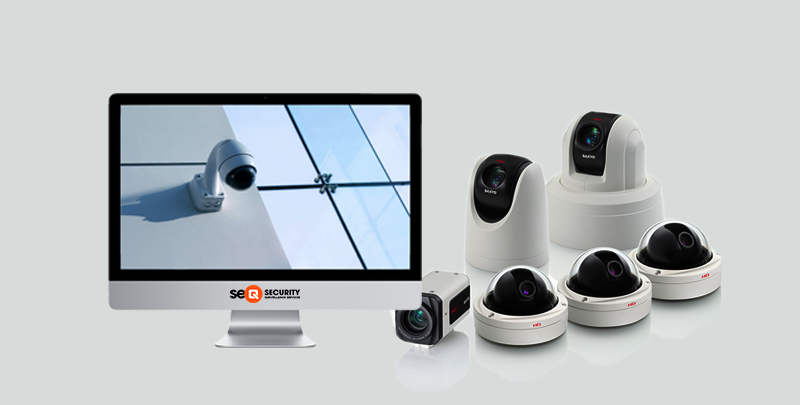
How Much Do Security Cameras Cost?
With so many choices in the home security camera market, pricing varies tremendously based on the equipment and brand. Let’s explore some factors to help you understand security camera pricing.
Upfront vs. Monthly Monitoring Costs
When choosing equipment, most companies give you the option to pay one price upfront or to break it down into a monthly subscription. Security cameras range from $20 to around $400+, depending on the device and the brand.
As you’re considering different options, remember to look for the monitoring prices. DIY home security camera systems are often self-monitored and only require you to purchase the device. However, other cameras require professional monitoring, ranging from $10 to $50.
Security Camera Professional Installation Costs
Most security cameras are DIY, meaning that you install them yourself and don’t spend money on installation costs. However, some security cameras, especially those part of larger home security and alarm systems like ADT or Vivint, require professional installation. On average professional installation costs around $100 to $200.

